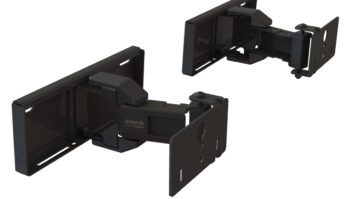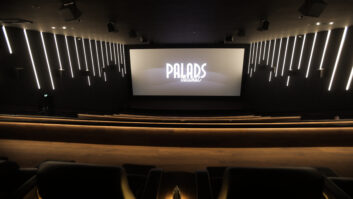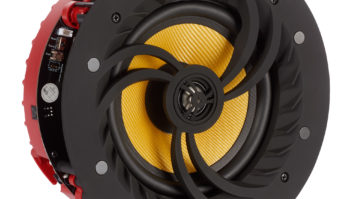
The first Atmos system installed in Italy was chosen by entrepreneur Orazio Brigadieci who decided to take the Cinema Royal, which had laid abandoned for 10 years in the Sicilian city of Gela and transform it into the Hollywood Multicinema, a leading edge multi-screen venue, which opened its doors at the end of 2013 and also features four Christie HFR (High Frame Rate) projectors.
The interior of the building was completely restructured to host four theatres, new projection booths and complementary service (food service and film-related merchandising sales).
A JBL/Crown rig was installed in the 188-seat Studio 1 (the Atmos room), to implement the spatial, object-based 3D sound provided by the new Dolby platform.
Thirty JBL 8340A high-power cinema surround enclosures are divided into six symmetrical left/right zones (side, rear and top surround), mounted on the side and rear walls and on the ceiling. In addition, five JBL 4739 + 4732-M/HF 4732 screen array systems sit behind and at the sides of the (14m x 6m) screen, with three front JBL 4645C 18in 800W subwoofers and four more on surround chores. The Crown CTs powerhouse comprises two CTs 3000, 10 CTs 1200 and 16 CTs 600, each fitted with a PIP-BLU module. The speaker set-up is optimised by a BSS Soundweb London BLU-100 12 x 8 processor and processed by the new Dolby CP850 Atmos cinema unit.
The sound system was designed by Ehome Italia Service Srl (Christie’s EMEA Italian branch) and Harman Professional’s Italian distributor Leading Technologies of Monza. Installation and system integration was also by Ehome Italia, led by site manager Francesco Giambanco. Involved from the outset, Leading Technologies fulfilled the order after the JBL/Crown combination had been recommended by the system integrator.
With its partners on the project, Ehome supplied and installed all the audio and video technology and, in the case of the Atmos system, Dolby consultant Marco Stefani, responsible for approval and commissioning, carried out the test and the final calibration, after which a final check was run prior to the room receiving Dolby Atmos certification.
Stefani explains: “For Atmos theatres, the architects prepare a design following Dolby guidelines for Atmos systems, which is passed to the consultants appointed for the approval of Atmos designs – there is another Dolby consultant in Italy, but he doesn’t do this type of work.”
Speaker placement and aiming must be very precise in relation to the RLP (Reference Listening Point), which is two thirds of the way down the room and mid-way between the side walls, and speakers must be calibrated to obtain 85dB at the RLP.
Once the design has been approved, all the data is passed on to a spreadsheet, and after this has also been approved, the installer proceeds with installation according to these documents.
Stefani continues: ”When everything is in place and tested, the consultant checks that the installation has been carried out correctly, runs a test and carries out a final calibration, using eight microphones appropriately positioned in the room, phonometer, spectrum analyser, etc. Dolby Atmos’ auto-EQ software then sends a sweep to each channel, which is recorded by the microphones, and the file created with the necessary EQ is uploaded on to the Dolby CP850 cinema processor.”
The other three rooms in the Hollywood (all operating with Dolby 7.1 surround), feature an impressive hardware total of 24 JB8320 three-way surround enclosures, 22 JBL 8340A two-way THX surround speakers, six JBL 3731 (5641 + 3732-M/HF) three-way screen arrays, three JBL 3732 (3739 + 3732-M/HF) three-way screen arrays, two JBL 4645C 18in subwoofers and a JBL 4642A behind-screen subwoofer. Power is courtesy of Crown DSi series amps (15 DSi 2000, two DSi 1000 and a DSi 4000).
The projector in the Hollywood Multicinema is a Christie CP4230 HFR (High Frame Rate), one of the latest additions to the manufacturer’s Solaria digital units and the world’s first Superior 4K DLP cinema projector. The other three rooms also have Christie HFR projectors (two 2K CP2210 and a 2K CP2220). High frame rate movies record and play visuals at twice the rate or more of what’s shown in today’s cinemas. Increasing the frame rate stops the blurring, flickering and stuttering visuals that are common with 24 FPS movies.
To read more on this project visit Installation’s May digital edition.







